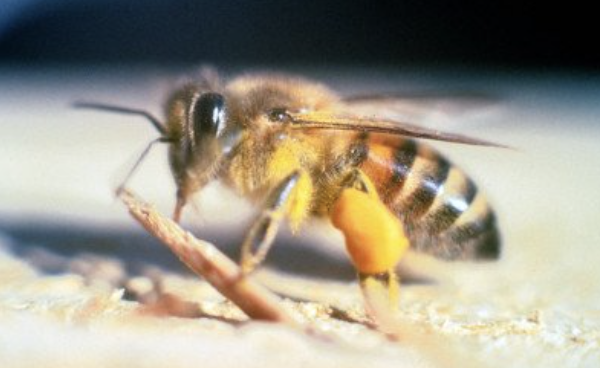
NAIROBI | KAMPALA | DAR ES SALAAM – A high-value apiculture revolution is quietly underway in East Africa. Bee venom—scientifically known as apitoxin—is fast becoming a promising economic alternative for beekeepers in Kenya, Uganda, and Tanzania. Once overlooked, this potent substance is now attracting global demand from the pharmaceutical and cosmetic industries, offering a new path for rural prosperity.
Unlocking Untapped Potential and Exceptional Returns
For decades, East African beekeeping centered on honey and beeswax—products with limited income potential. Bee venom changes that equation dramatically:
- Superior Profitability: A gram of bee venom fetches ~$16 (UGX 60,000) in Uganda and ~$30 (KES 4,000–4,500) in Kenya, compared to just $2.60 (UGX 10,000) for a kilogram of honey. On international markets, prices soar to $100 per gram.
- Reliable Income: Unlike honey’s seasonal yields, venom can be harvested daily, with each session taking less than an hour, ensuring a consistent income stream for farmers.
- Diverse, High-End Applications:
- Pharmaceuticals: Known for its anti-inflammatory, antimicrobial, antiviral, and anti-cancer properties. It’s under study for treating arthritis, multiple sclerosis, HIV, and SARS-CoV-2.
- Cosmetics: Popular in premium anti-aging and skin rejuvenation products due to its ability to boost collagen and reduce inflammation.
- Apitherapy: Traditional bee sting therapy is locally used to manage pain, arthritis, and stroke recovery, though largely unregulated.
Local Innovations Leading the Charge
East Africa isn’t just catching up—it’s innovating:
- Kenya – Patvention Ltd: Founded by Patrice Murugi Wachira, the company has developed a patented, ethical venom extractor that doesn’t harm bees. Their goal is to scale across Africa and tap into global markets.
- Uganda – Affordable Collectors: Local innovators have built venom collectors costing UGX 600,000 (~$160)—a fraction of the $2,000 price tag on imported devices—making the technology far more accessible to smallholders.
Such innovations are key to democratizing access to this high-value product, boosting self-reliance and local manufacturing.
Obstacles on the Horizon
Despite its promise, the bee venom industry faces substantial hurdles:
- Regulatory Gaps: While Tanzania’s 2005 guidelines include bee venom as an “apiary product,” detailed standards are absent. Kenya’s Livestock Bill 2024, which proposed regulations, was withdrawn after pushback from beekeepers. Uganda has no formal regulation, particularly around apitherapy.
- Quality Control: International markets demand 95–99% purity, which many local producers cannot meet due to poor handling, inadequate hygiene, and limited post-harvest knowledge.
- Production Challenges: Traditional hives, lack of modern equipment, and limited technical training keep venom production inefficient.
- Bee Health Risks: Pests like Varroa mites, diseases like Nosema, and pesticide misuse reduce bee populations and productivity.
- Social Barriers: Cultural taboos and traditional roles often exclude women and youth from beekeeping, reducing workforce diversity.
- Fragmentation and Finance: Disorganized beekeeping communities lack collective bargaining power, access to credit, and support services.
Strategic Recommendations: Building a World-Class Industry
A thriving bee venom sector will require bold collaboration across governments, private innovators, NGOs, and international development partners. Key actions include:
1. Strengthen Regulatory Frameworks
- Develop national standards and quality protocols.
- Regulate and legitimize apitherapy practices, ensuring safety and efficacy.
2. Enhance the Value Chain
- Invest in modern processing facilities with capabilities for extraction, purification, and storage.
- Support local manufacturing of affordable venom collection tools.
- Facilitate financial inclusion through micro-loans and grants.
- Promote inclusive business models linking smallholders with innovators (e.g. Patvention, Savannah Honey, Beegift Products).
3. Scale Knowledge and Technology
- Deliver training programs focused on venom extraction, post-harvest handling, and quality control.
- Boost digital literacy for hive monitoring, traceability, and market intelligence (e.g., blockchain-based tracking).
- Support research collaborations between local institutes (e.g. icipe in Kenya, SVAR-RTC in Uganda) and global partners.
4. Develop Markets and Exports
- Provide real-time market intelligence to farmers on pricing and demand.
- Establish certification schemes and brand “East African Bee Venom” as a mark of quality and purity.
- Target high-value export markets, especially in Asia-Pacific, where demand is booming.
Leading the Charge
Pioneering companies like Beegift Products (Tanzania), Savannah Honey (Kenya), and Tanzania International Bee Co. Ltd are expanding from honey into venom, prioritizing smallholder training and inclusion. Development support from AfDB, UNDP, and FAO is catalyzing this shift—supporting technology, organizing farmer groups, and introducing digital tools.
The Sting That Pays
East Africa’s bee venom industry stands at a critical inflection point. Transitioning from informal honey production to a regulated, export-grade venom value chain could triple rural incomes, empower underserved populations, and diversify national economies.
As one expert aptly put it:
“It’s not enough to produce venom—East Africa must meet the exacting demands of the world’s most valuable markets.”
With the right mix of policy, innovation, training, and partnerships, bee venom could be East Africa’s next billion-dollar commodity.
